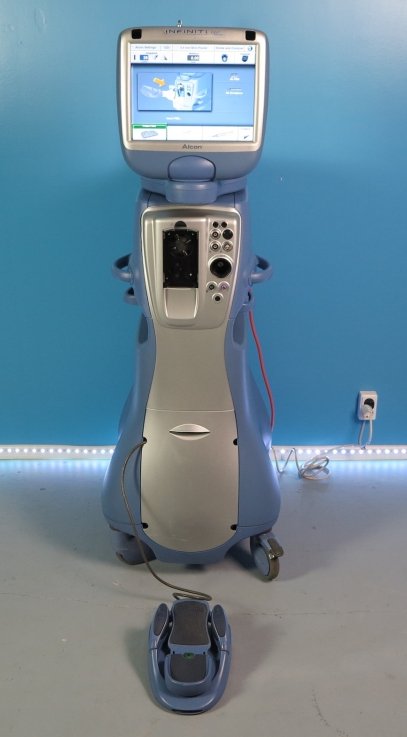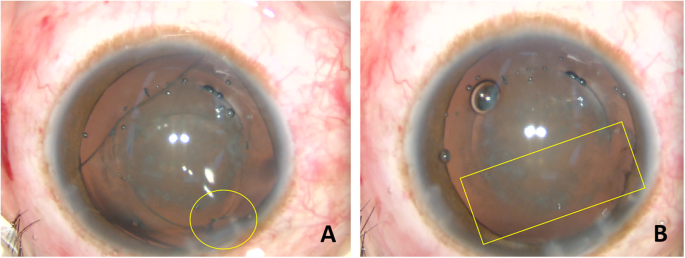What is a cataract?

The lens inside the eye helps us focus light on the retina and produce clear and sharp images. Due to various factors like ageing, insoluble proteins envelop the lens, leading to cloudy and hazy vision. This eye problem is called a cataract. Cataracts develop gradually over many years. But there are cases when a cataract has progressed very rapidly. Although a disease of the aged, young people can get cataracts too. It happens mainly with patients with a family history of cataracts.
A cataract is a progressive disease. Often, patients fail to detect it early. One must understand that no diet, medicine, eye drops, or exercise can help to slow down or prevent the development of cataracts. Hence, regular eye check-ups and early detection can ensure timely treatment and save vision.
Cataract Surgery done by Dr Jugal Shah
What are the signs and symptoms of cataracts?
A cataract develops over a period with a gradual impact on the vision. Hence, patients fail to identify the signs and may ignore, till their eyesight is badly affected.
A cataract begins with blurred vision in all cases. As it progresses, the symptoms include:
- An increasing glare from strong sunlight or brightness at night, making it difficult to drive any vehicle or walk on the road.
- There may be hazy or blurred vision making it difficult to read small print or perform minute tasks.
- Double vision or distortion of images may occur.
- Things may seem brighter in one eye than the other.
- There may be a need to change glasses frequently.
- There may be poor depth prescription, e.g.difficulty in getting downstairs.

What causes cataracts?
Cataracts do not result from excessive strain of the eyes or reading in a bad light. The common causes of cataracts include:
- Ageing
- Injury or trauma to the eye
- Metabolic illnesses like diabetes
- Infection or inflammation in the eye
- Prolonged medication like steroids
- In rare cases, children are born with a cataract (Congenital Cataract)
- Family history of cataracts. In such cases, young people can also get it
- Glaucoma or chronic inflammation leading to secondary cataracts
What is the treatment for cataracts?
The only treatment for a cataract is surgery.
It is a misconception that cataracts cannot be operated upon unless ripe or mature. The less mature a cataract, the easier the surgery and faster the recovery. Today, with the advanced technology of LASER Phacoemulsification, one need not wait for cataracts to mature. A cataract can be removed at any stage as soon as it begins to interfere in routine life.
Eye specialists at Maa Nursing Home and NetraJyoti Eyecare Centre advise patients to operate when a cataract is still soft. Phacoemulsification is a hassle-free day-care procedure that takes less than 20 minutes. A patient can get back to his routine activities within two days. Most health Insurance companies cover this treatment. So, a patient can get a cashless facility.
The second surgery option that we offer is FLACS or Femto LASER-assisted cataract surgery. It is an innovative bladeless and automated surgery. Patients undergoing this technique recover faster and have better vision results. With Femtosecond LASER, cataract surgery is now safer and more accurate.
It is advisable to take treatment as soon as the cataract is detected. Delay in treatment can cause bursting of cataracts and complete loss of vision. Hence, we recommend people above the age of 40 years, diabetic and other high-risk patients to get their eyes checked regularly.

How is the cataract surgery performed with the LASER phacoemulsification technique?
Maa Nursing Home and NetraJyoti Eyecare Centre has a high-quality Phaco machine to offer advanced micro-incision cataract surgery.
Cataract surgery involves the removal of the clouded lens and its replacement with a clear synthetic intraocular lens (IOL).
With this modern technique, the cataract is broken into pieces inside the eye using ultra-sound and then sucked out (aspirated) with the help of a suction emulsifier probe. The phacoemulsification technique is quick, with no stitches, and the cut is barely 2-3mm. Our eye surgeons have mastered the skill and cut about 1.5 mm. So, our patients have better results. After surgery, our patients rarely encounter any complications.
An intraocular lens (IOL) implant replaces the diseased lens. Eye specialists in Maa Nursing Home and NetraJyoti Eyecare Centre recommend foldable lenses, available in a wide range of vision specifications and budgets. With advanced IOL lenses, there is no magnification or distortion of images. A good quality synthetic lens gives better vision, particularly in the night and low light area.
 Maa.jpg)
Types of Lenses:
- Toric lens: one of the popular lens implants, they are designed for patients who do not want to wear eyeglasses for distant vision.
- Multi-focal lenses: Are available in the bi-focal and tri-focal lenses. It can replace natural lenses, and patients can avoid wearing eyeglasses.
- E DOF lens: Extended depth-of-focus (EDOF) is a new intraocular lens (IOL) technology that aids in enhancing the depth of focus by creating a single elongated focal point.
What is the care needed after the cataract surgery?
- Use eye drops and medications as instructed by the eye surgeon
- Wear sunglasses when going out to protect yourself from sunlight and dust.
- Maintain good eye hygiene
- Don’t rub or scratch the eye.
- Avoid dust, pollution, and water entering the eyes for a month.
- No head baths for the next five days.
Do you need to wear spectacles (glasses) after the cataract surgery?
Patients may need reading glasses. Most patients can resume routine work within 2-3 days after the surgery.
Advantages of Phacoemulsification cataract surgery:
- Stitchless operation
- Minimal cut
- Faster healing
- Insignificant trauma to the eye
- Local anaesthesia (eye drops) used
- Early return to work
- Less chance of a post-operative cylindrical number